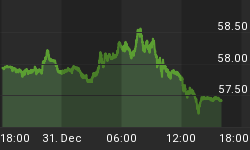The following is part of Pivotal Events that was published for our subscribers Thursday, December 11, 2008
SIGNS OF THE TIMES:
Last Year:
"The whole world, including the U S has benefited...from credit availability."
- Henry Paulson, US Treasury Secretary, Times Online, September 18, 2007
Not all were naïve about credit innovation. On March 30, the Calgary Herald had the banking story of the year:
"Above the SubPrime Fray Canadian Western Bank Outshines Tarnished Rivals"
CEO, Larry Pollack, explained the avoidance of disastrous paper:
"We were not smart enough to understand that stuff."
Drumroll-kaboom.
"Even the most bearish strategist in the group recommends that investors keep a majority of their assets, 60%, in equities."
- Wall Street Journal, December 28, 2007
This was from a survey of strategists at 8 major securities firms.
Wonder what the consensus was on November 20?
* * * * *
This Year:
The crash has been seen by the establishment as severe enough to prompt the following response from Ben Bernanke:
"No Comparison To Great Depression"
- Breitbart. December 1, 2008
Well, the crash replicated that of 1929 and at the equivalent stage then the establishment advised:
"In the first place a severe depression like that of 1920-21 is outside the range of probability."
- Harvard Economic Society, Barron's, November 25, 1929
Obviously, when interventionist economists are on the watch nothing can go wrong.
Stock Markets: The key now is to appreciate what is working and what is not working.
Actually, the game is about appearances. In January when bailouts began to be urgently applied we expected that by the fall they would be eventually seen to be not working. This was the case as the bailout crowd turned from boasting to dismay. Even encouraging words about a lag between policy implementation and result being in the order of two years had little effect on margin clerks performing their tasks. With this info, the curious might wonder why two years ago the Fed decided to replicate the 1929, or 1873 crashes for this fall?
Just asking, but the next event is the rebound that will, by spring, make policymakers look good again. Underlying the indexes the action seems constructive as advance/declines have been improving since November 20. This is supported by money markets easing, and commodities steadying. Actually the last few days have clocked a jump in most prices.
With some inevitable swings stock markets should show good returns out to April. A 50 percent retracement of the loss since August has been possible.
Barbarous Relics:
As we have described, the fall sequence of panics replicated the 1929 and 1873 crashes with remarkable fidelity.
As part of the tout with the mania that blew out in 1929, John Moody published a lengthy piece "The New Era in Wall Street". In it he condemned the old Treasury System that had prevailed during The Great Depression that endured from 1873 until 1895.
Moody explained: "The old breeder of financial panics, the [Treasury System], which had been a menace to American progress for two decades, had now been replaced by a modern, scientific reserve system which embodied an elastic currency and an orderly control of the money market."
Clearly it is time for serious researchers to conclude that the Fed has been just another destabilizing "barbarous relic", and that the crash marks the failure of an experiment in contrived banking systems. Identifying the Fed as a "serial bubble blower" has been a good start. Now it can be labeled as a breeder of financial panics.
Link to December 12, 2008 'Bob and Phil Show' on Howestreet.com: http://www.howestreet.com/index.php?pl=/goldradio/index.php/mediaplayer/1054
















